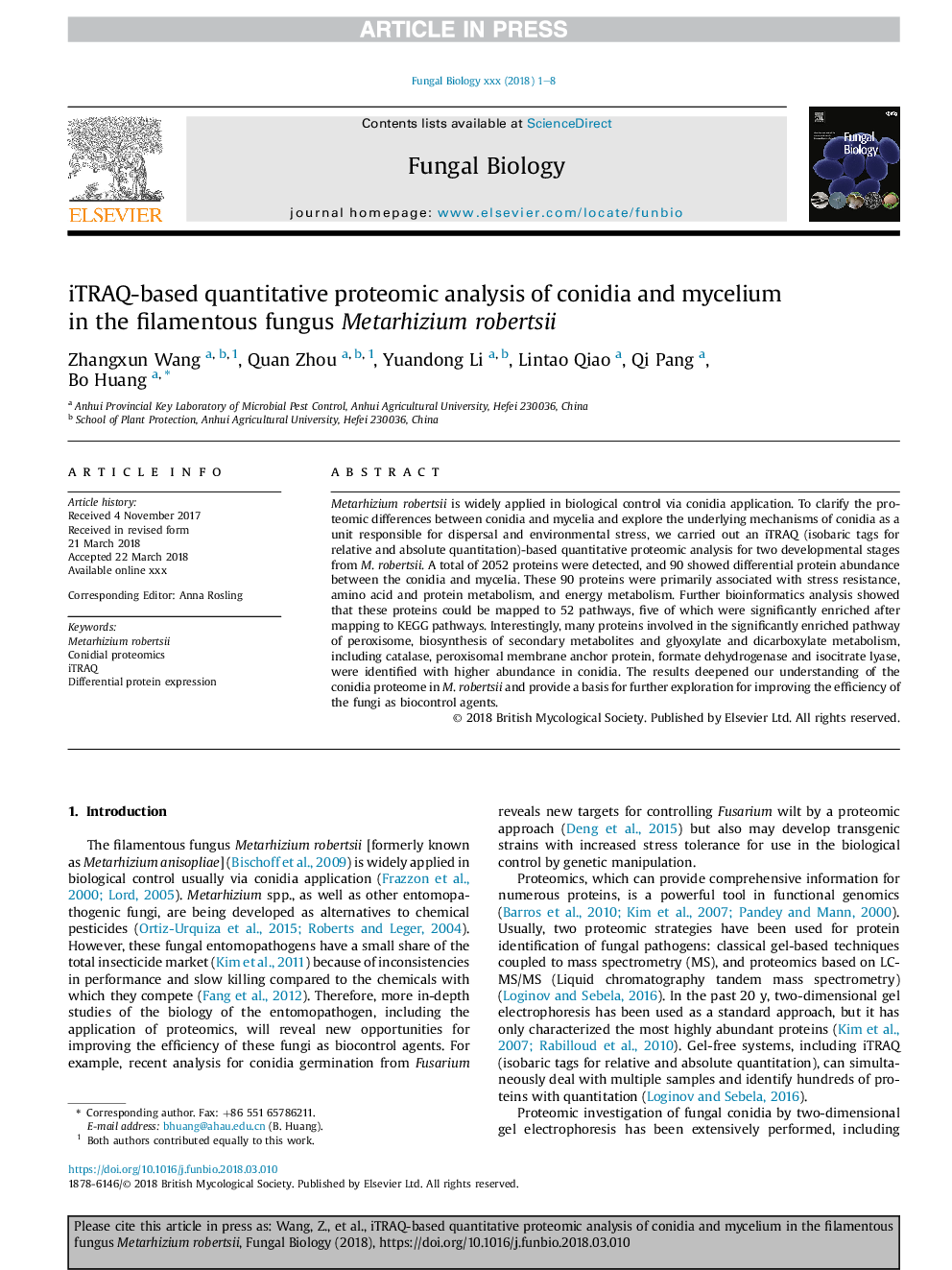| Article ID | Journal | Published Year | Pages | File Type |
|---|---|---|---|---|
| 8842724 | Fungal Biology | 2018 | 8 Pages |
Abstract
Metarhizium robertsii is widely applied in biological control via conidia application. To clarify the proteomic differences between conidia and mycelia and explore the underlying mechanisms of conidia as a unit responsible for dispersal and environmental stress, we carried out an iTRAQ (isobaric tags for relative and absolute quantitation)-based quantitative proteomic analysis for two developmental stages from M. robertsii. A total of 2052 proteins were detected, and 90 showed differential protein abundance between the conidia and mycelia. These 90 proteins were primarily associated with stress resistance, amino acid and protein metabolism, and energy metabolism. Further bioinformatics analysis showed that these proteins could be mapped to 52 pathways, five of which were significantly enriched after mapping to KEGG pathways. Interestingly, many proteins involved in the significantly enriched pathway of peroxisome, biosynthesis of secondary metabolites and glyoxylate and dicarboxylate metabolism, including catalase, peroxisomal membrane anchor protein, formate dehydrogenase and isocitrate lyase, were identified with higher abundance in conidia. The results deepened our understanding of the conidia proteome in M. robertsii and provide a basis for further exploration for improving the efficiency of the fungi as biocontrol agents.
Related Topics
Life Sciences
Agricultural and Biological Sciences
Agricultural and Biological Sciences (General)
Authors
Zhangxun Wang, Quan Zhou, Yuandong Li, Lintao Qiao, Qi Pang, Bo Huang,
